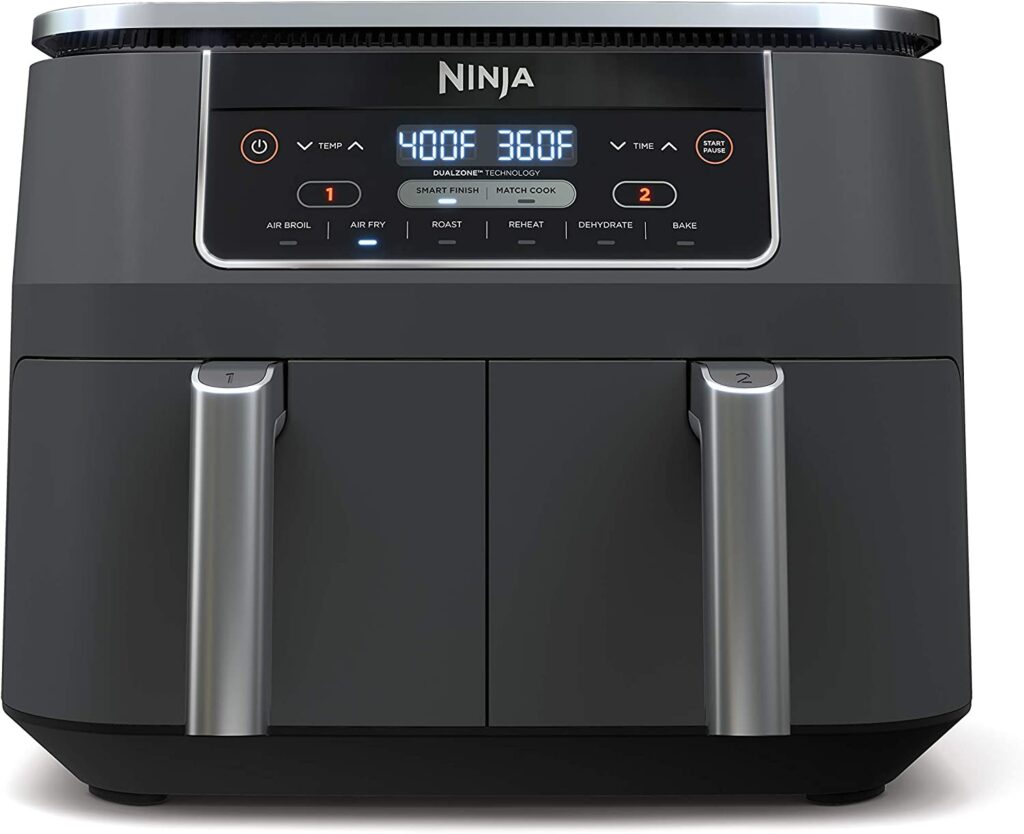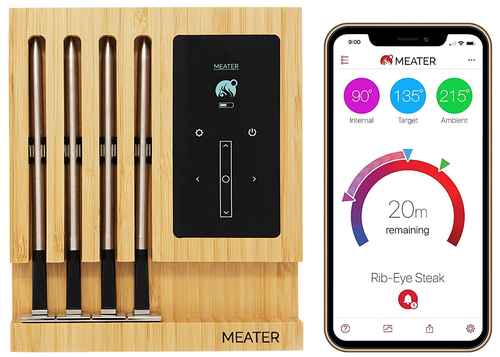The Ultimate Guide To Fresh Tuna In The Air Fryer
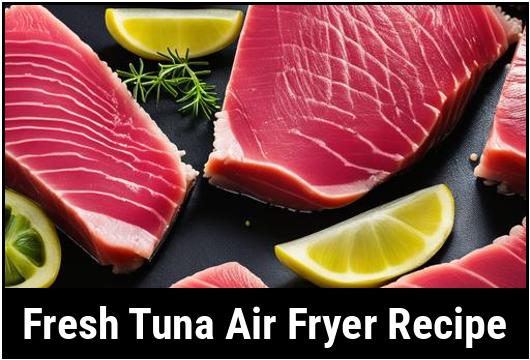
Welcome to our comprehensive guide on cooking fresh tuna in the air fryer! Here, we will delve into the wonderful world of culinary delight that awaits you when you pair fresh tuna with the convenience and efficiency of an air fryer. Get ready to explore the food science behind it, learn about the culinary details, discover how to select and clean the freshest tuna, and get useful preparation tips, variations, doneness checks, and a mouthwatering recipe. So grab your apron, and let’s dive in!
Understanding the Science:
Before we dive into the culinary details, it’s essential to understand the science behind air frying fresh tuna. Air frying is a cooking method that uses hot air circulated at high speeds to achieve a crispy texture without excessive oil. Fresh tuna, with its firm texture and high protein content, is ideal for air frying. The air fryer’s rapid hot air circulation helps cook the tuna evenly and quickly, locking in moisture and preserving the delicate flavors.
Culinary Details:
Now, let’s explore some culinary details that will elevate your fresh tuna air frying game:
Selection:
When it comes to selecting fresh tuna for air frying, opt for high-quality, sushi-grade pieces. Look for tuna with a vibrant red color, shiny skin, and a fresh ocean smell. Freshness is key to achieving the best flavor and texture in your dish.
Cleaning:
Proper cleaning is crucial to ensure the purity and safety of your fresh tuna. Rinse the tuna under cold running water and pat it dry using paper towels. Remove any bones or dark tissue from the fish to enhance the overall taste and texture.
Preparation Tips:
To make your fresh tuna air fryer recipe a mouthwatering success, consider these preparation tips:
-
Marinate: Marinating the tuna adds depth of flavor. Create a marinade using a combination of soy sauce, ginger, garlic, and lime juice. Let the tuna marinate for at least 30 minutes before air frying.
-
Seasoning: Besides the marinade, consider seasoning the tuna further with spices like black pepper, paprika, or even a sprinkle of sesame seeds.
-
Preheating: Preheat your air fryer to the recommended temperature before adding the tuna. This ensures proper cooking and helps achieve that golden, crispy exterior.
-
Oil: Even though the air fryer requires less oil than traditional frying methods, you can boost the flavor by lightly brushing the tuna with a small amount of olive oil or another preferred oil. This will aid in browning and prevent the fish from sticking to the air fryer basket.
-
Slicing: Depending on the recipe you choose, slice the fresh tuna into steaks or smaller portions for easier cooking and serving.
Doneness Checks:
Determining the doneness of your fresh tuna is vital to achieve the perfect balance of tenderness and succulence. Consider these checks:
-
Temperature: Invest in a reliable meat thermometer to check the internal temperature of the tuna. Perfectly cooked fresh tuna is medium-rare, with an internal temperature of around 125°F (52°C).
-
Texture: The tuna should be opaque and slightly firm on the outside while still tender and moist on the inside.
-
Flake Test: Gently flake a small piece of the cooked tuna. If it flakes easily and remains moist, it’s an indication that it’s ready to be enjoyed.
-
Color: Look for a uniformly cooked, golden-brown exterior that brings out the natural beauty of the dish.
Recipe: Fresh Tuna Delight
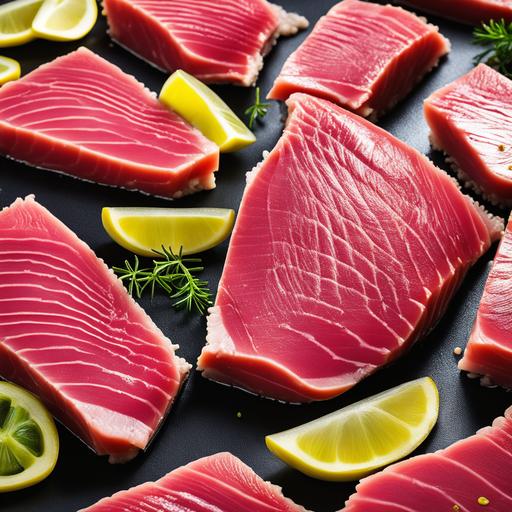
Ingredients:
- 1 lb (450g) fresh tuna steak
- 2 tablespoons soy sauce
- 1 tablespoon olive oil
- 1 teaspoon minced garlic
- 1 teaspoon grated ginger
- 1 tablespoon lime juice
- Salt and pepper to taste
Instructions:
- Rinse the fresh tuna steak under cold running water and pat it dry with paper towels.
- In a shallow bowl, combine the soy sauce, olive oil, minced garlic, grated ginger, lime juice, salt, and pepper.
- Place the tuna steak in the marinade, ensuring it is coated on all sides. Let it marinate for at least 30 minutes in the refrigerator.
- Preheat the air fryer to 400°F (200°C) for 5 minutes.
- Remove the tuna from the marinade and gently pat off excess marinade.
- Lightly brush the tuna steak with olive oil for a beautiful sear and to prevent sticking.
- Place the tuna in the air fryer basket, ensuring it is not overcrowded.
- Air fry at 400°F (200°C) for 6-8 minutes, depending on your desired level of doneness. Rotate the steak halfway through for even cooking.
- Once the tuna reaches an internal temperature of 125°F (52°C), it is ready to be served.
- Let the cooked tuna rest for a few minutes before slicing it into thin, elegant portions.
- Serve with a side of your choice, such as a fresh salad, roasted vegetables, or a flavorful citrus sauce.
Variations:
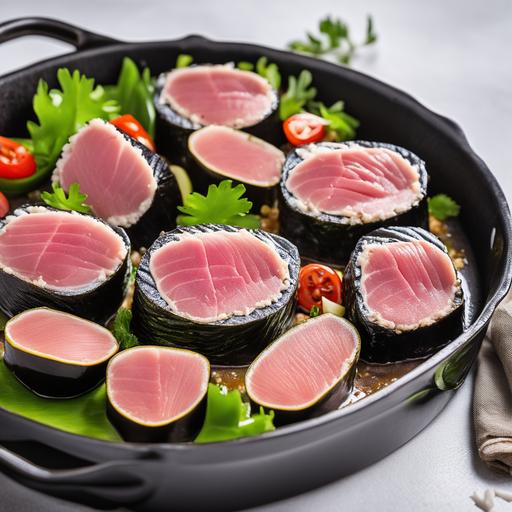
Now that you have mastered the basic recipe, why not explore a few delicious variations of fresh tuna in the air fryer?
1. Asian Glazed Tuna:
Combine soy sauce, honey, sesame oil, and rice vinegar to create a sweet and savory glaze. Brush the tuna with the glaze before air frying and enjoy a delightful fusion of flavors.
2. Spicy Cajun Tuna:
Spice things up by mixing Cajun seasoning, paprika, garlic powder, and a hint of cayenne pepper. Rub this flavorful blend onto the tuna and air fry to perfection.
3. Sesame Crusted Tuna:
Coat the tuna with a mix of black and white sesame seeds before air frying. The crust will add an irresistible nuttiness to your dish.
With these variations, feel free to get creative and personalize your fresh tuna experience!
Conclusion
In conclusion, air frying fresh tuna opens up a world of culinary possibilities. We have explored the food science behind it, provided culinary details, highlighted the importance of selection and cleaning, shared prepping tips, doneness checks, and presented a scrumptious recipe for you to try. The air fryer offers a convenient and healthier way to enjoy the delicate flavors and velvety texture of fresh tuna. So, why not seize the opportunity, grab your air fryer, and embark on a flavorful adventure with fresh tuna that will leave your taste buds rejoicing? Happy cooking!
Sources
FAQS On Fresh Tuna Air Fryer Recipe
What Is The Best Type Of Tuna To Use For An Air Fryer Recipe?
Fresh tuna that is firm and thick is ideal for an air fryer recipe since it can withstand the high heat and retain its moisture.
Can I Use Frozen Tuna For This Recipe?
It is recommended to use fresh tuna for the best results, but if using frozen tuna, make sure to thaw it completely before cooking.
How Do I Prepare The Tuna Before Putting It In The Air Fryer?
Pat the tuna dry with paper towels and season it with your desired spices or marinade before cooking. Avoid adding too much oil as the air fryer cooks with hot air instead of oil.
How Long Does It Take To Cook Tuna In An Air Fryer?
It usually takes around 10-12 minutes to cook fresh tuna in an air fryer, depending on the thickness of the fish. Make sure to check the internal temperature with a meat thermometer to ensure it is cooked to your desired doneness.
Can I Add Vegetables Or Other Ingredients To The Air Fryer With The Tuna?
Yes, you can add vegetables or other ingredients to the air fryer with the tuna for a complete meal. Just make sure they are cut into small pieces and seasoned properly to ensure even cooking.
Can I Use A Marinade For The Tuna In This Recipe?
Yes, a marinade can enhance the flavor of the tuna. However, make sure to pat the tuna dry before cooking to prevent excess moisture, which can affect the air frying process.
Can I Reheat Leftover Air Fried Tuna?
Yes, you can reheat leftovers by placing the tuna in the air fryer for a few minutes or heating it in the microwave for a shorter amount of time. Just be careful not to overcook the tuna to maintain its moisture and texture.

